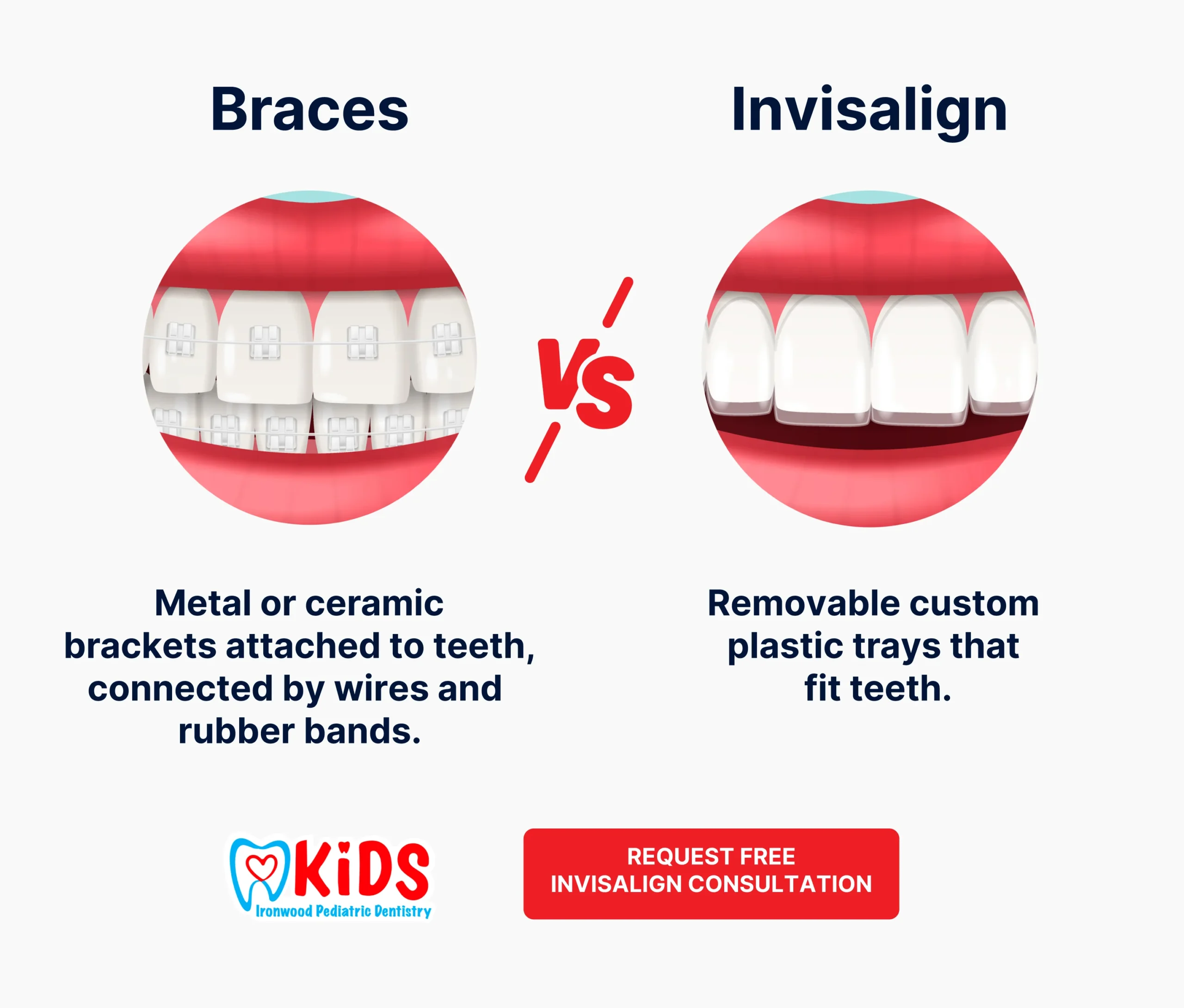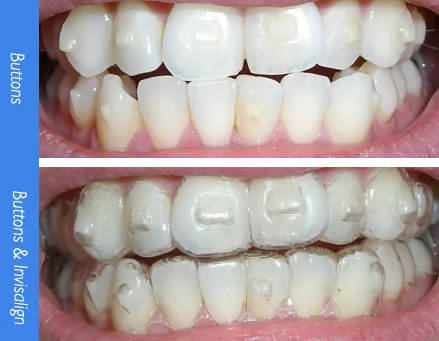What to Expect Throughout Your Invisalign Journey: A Comprehensive Introduction
Invisalign vs. Typical Dental braces: Which Option Is Right for You?
When thinking about orthodontic therapy, the choice between Invisalign and traditional braces presents numerous vital variables that warrant cautious examination. Invisalign uses a discreet alternative with detachable aligners, while conventional dental braces supply an extra visible yet efficient service for serious imbalance. Each alternative incorporates distinctive advantages and disadvantages connected to looks, comfort, therapy period, and cost. Comprehending these nuances is important for making an informed decision that lines up with your personal preferences and way of life. The concern stays: which alternative will finest satisfy your orthodontic demands and expectations?
Summary of Treatment Choices

In comparison, conventional dental braces are composed of steel brackets and cables that are bound to the teeth. This method uses continual stress with time to attain placement. While reliable for intricate orthodontic issues, typical dental braces require normal visits for modifications and can position obstacles in maintaining oral hygiene due to the difficulty of cleansing around brackets and wires.
Both choices have their values, and the choice commonly rests on particular dental conditions, way of life preferences, and person conformity. Eventually, speaking with an orthodontic expert is important for identifying the most appropriate treatment plan tailored to individual requirements. Recognizing the nuances of each option can dramatically influence the overall success of orthodontic treatment.
Visual Factors To Consider
A significant factor influencing the option in between Invisalign and traditional dental braces is the aesthetic charm each treatment offers. Invisalign aligners are crafted from clear plastic, making them virtually undetectable when put on. This very discreet appearance is particularly interesting grownups and young adults who may feel uneasy regarding their orthodontic therapy. The ability to keep an all-natural smile throughout the positioning process can significantly enhance the individual's self-confidence in expert and social setups.
In comparison, standard braces are composed of metal brackets and wires, which can be extra noticeable. While improvements in orthodontic technology have actually led to the growth of smaller braces and tinted elastics, standard braces still keep a more conspicuous profile. For some individuals, the exposure of dental braces might discourage them from seeking needed therapy.
Ultimately, the option in between Invisalign and typical braces might depend upon personal choices relating to aesthetic appeals. Individuals that prioritize discretion often favor Invisalign, while those that are much less concerned about presence might go with traditional dental braces. Comprehending the visual effects of each choice is important for making an educated choice that straightens with one's way of living and choices.
Convenience and Convenience

In regards to comfort, Invisalign aligners are removable, enabling individuals to appreciate their preferred foods without constraint and preserve optimum oral hygiene. Brushing and flossing are streamlined, as the aligners can be taken out throughout these regimens, whereas standard dental braces require mindful steering around brackets and cords.
In comparison, traditional braces require regular modifications, making them less convenient for those with hectic routines. Overall, the convenience and comfort of Invisalign make it an attractive option for several individuals seeking orthodontic therapy.
Therapy Duration and Effectiveness
While both Invisalign and standard braces work in dealing with oral imbalances, the duration of therapy can differ significantly between both alternatives. Typically, Invisalign treatment can take anywhere from 12 to 18 months, depending on the intricacy of the situation. The clear aligners function by progressively changing teeth into their preferred positions, and regular follow-ups with an orthodontist help make certain progression continues to be on the right track.
In comparison, typical braces usually call for a longer commitment, usually ranging from 18 months to three years. This is due to their set nature and the use of braces and cords, which can be a lot more effective for serious imbalances and complex instances (Invisalign). The therapy performance of typical dental braces is well-documented, as they allow for specific modifications and better control over tooth movement
Ultimately, the selection between Invisalign and conventional braces might rest on both the awaited therapy period and the certain dental concerns at hand. Consulting with an orthodontist is crucial, as they can go to my blog supply tailored referrals based on individual requirements, making certain the picked method aligns with wanted outcomes and durations.
Price Contrast and Insurance Coverage Alternatives
Price plays a significant function in pop over to this site the decision-making process for individuals taking into consideration orthodontic therapy, whether selecting Invisalign or typical braces. Usually, the expense of Invisalign ranges from $3,000 to $8,000, while conventional braces generally set you back between $2,000 and $6,000. Variables influencing these expenses consist of the intricacy of the case, the duration of treatment, and geographical area.
Many dental insurance plans provide partial coverage for orthodontic therapies, yet the specifics can differ widely. Generally, traditional braces may be extra frequently covered by insurance strategies compared to Invisalign, which some insurance firms classify as an aesthetic treatment.
Additionally, numerous orthodontic basics techniques use flexible payment strategies, making both treatment options a lot more obtainable. Clients must ask about prospective funding options and price cuts for ahead of time settlements. Evaluating the complete price, consisting of insurance advantages and payment plans, is necessary for making an educated decision that straightens with both visual preferences and spending plan factors to consider.

Conclusion
In recap, the selection between Invisalign and typical dental braces pivots on numerous variables, including aesthetic choices, convenience, treatment period, and cost. Invisalign supplies a discreet, detachable alternative that facilitates dental hygiene and dietary adaptability, while traditional dental braces may be better for complicated dental problems and frequently come with a reduced cost factor. Eventually, examination with an orthodontist is necessary to evaluate individual scenarios and identify one of the most suitable therapy alternative for attaining ideal dental positioning.
When thinking about orthodontic treatment, the option in between Invisalign and typical dental braces offers a number of crucial aspects that merit cautious examination.Comparing Invisalign and conventional dental braces exposes unique treatment alternatives for orthodontic modification.While both Invisalign and standard braces are efficient in remedying dental imbalances, the period of therapy can vary significantly between the two alternatives.Expense plays a significant duty in the decision-making process for individuals considering orthodontic treatment, whether deciding for Invisalign or typical dental braces.In recap, the selection in between Invisalign and conventional braces pivots on numerous elements, including visual preferences, convenience, treatment duration, and price.